Milling Al520-MMC Reinforced with SiC Particles and Additive Elements Bi and Sn
Abstract
:1. Introduction
2. Materials and Methods
3. Results and Discussion
3.1. Surface Quality Attributes (Ra, Rz)
3.1.1. Surface Quality Attributes (Ra, Rz) in Al520
3.1.2. Surface Quality Attributes (Ra, Rz) in Al520 + 10% SiC
3.1.3. Surface Quality Attributes (Ra, Rz) in Al520 + 10%SiC + 1%Bi
3.1.4. Surface Quality Attributes (Ra, Rz) in Al520 + 10%SiC + 1%Sn
3.2. Tool Flank Wear (Measurement)
3.2.1. Tool Flank Wear (Measurement) in Al520
3.2.2. Tool Flank Wear (Measurement) in Al520 + 10% SiC
3.2.3. Tool Flank Wear (Measurement) in Al520 + 10%SiC + 1%Bi
3.2.4. Tool Flank Wear (Measurement) in Al520 + 10%SiC + 1%Sn
4. Conclusions
- The effects of cutting parameters on Ra and Rz were statistically insignificant, while the R2 was almost below 60% in all cases. Thus, it can be stated that despite the reinforcing elements used, both surface roughness attributes cannot be controlled by the cutting parameters used.
- It was observed that the wear increases at a higher cutting speed irrespective of the cooling method used.
- In some cases and due to the presence of SiC in the tested work parts and its heterogeneous distribution in the base material, inevitable collisions may occur between the cutting tooltip and the reinforcing elements. This phenomenon may tend to increase the wear drastically.
- The use of Bi and Sn in the matrix structure of the work part led to better surface quality than that observed when machining Al520.
- It was found that despite the material used, tool flank wear can be statistically controlled by cutting parameters. The effects of cutting speed and lubricant on the tool flank wear are very tangible. Depth of cut had the most negligible effects compared to other cutting parameters.
- Compared with the recorded tool flank wear in machining Al520 + 10% SiC, the use of Bi and Sn in the matrix structure of the work part led to better surface quality, and tool flank wear was decreased by around 50%.
- Lower tool flank wear was observed under wet machining than was observed under dry mode despite the reinforcing elements used.
- It can be stated that no clear relationship could be established between recorded values of tool flank wear in the base material (Al520) and reinforced composites with SiC, Bi, and Sn particles. However, this phenomenon could be related to different effects of each cutting parameter on the recorded values of tool flank wear when machining Al520-MMCs, reinforced with various elements. This observation agrees with the findings reported in Table 7.
Author Contributions
Funding
Institutional Review Board Statement
Informed Consent Statement
Data Availability Statement
Acknowledgments
Conflicts of Interest
Nomenclature
| MMC | Metal matrix composite |
| SEM | Scanning electron microscope |
| EDS | Energy-dispersive X-ray spectroscopy |
| VB | Flank wear |
| ap | Depth of cut |
| fr | Feed rate |
| R2 | Correlation of determination |
| Ra | Average surface roughness |
| Rz | Average of five maximum peaks in surface roughness diagram |
| Vc | Cutting speed |
| Al | Aluminum alloy |
| SiC | Silicon carbide |
| Bi | Bismuth |
| Sn | Tin |
| r | Regression rate |
| ANOVA | Analysis of variance |
References
- Boostani, A.F.; Tahamtan, S.; Jiang, Z.Y.; Wei, D.; Yazdani, S.; Azari Khosroshahi, R.; Taherzadeh Mousavian, R.; Xu, J.; Zhang, X.; Gong, D. Enhanced tensile properties of aluminium matrix composites reinforced with graphene encapsulated SiC nanoparticles. Appl. Sci. Manuf. 2015, 68, 155–163. [Google Scholar] [CrossRef] [Green Version]
- Emamy, M.; Khorshidi, R.; Raouf, A.H. The influence of pure Na on the microstructure and tensile properties of Al-Mg2Si metal matrix composite. Mater. Sci. Eng. 2011, 528, 4337–4342. [Google Scholar] [CrossRef]
- Hadian, R.; Emamy, M.; Varahram, N.; Nemati, N. The effect of Li on the tensile properties of cast Al–Mg2Si metal matrix composite. Mater. Sci. Eng. 2008, 490, 250–257. [Google Scholar] [CrossRef]
- Ye, T.; Xu, Y.; Ren, J. Effects of SiC particle size on mechanical properties of SiC particle reinforced aluminum metal matrix composite. Mater. Sci. Eng. A 2019, 753, 146–155. [Google Scholar] [CrossRef]
- Chandio, A.D.; Ansari, M.B.; Hussain, S.; Siddiqui, M.A. Silicon Carbide Effect as Reinforcement on Aluminium Metal Matrix Composite. J. Chem. Soc. Pak. 2019, 41, 650–654. [Google Scholar]
- Rojas, J.I.; Siva, B.V.; Sahoo, K.L.; Crespo, D. Viscoelastic behavior of a novel aluminum metal matrix composite and comparison with pure aluminum, aluminum alloys, and a composite made of Al–Mg–Si alloy reinforced with SiC particles. Mater. Manuf. Processes 2018, 744, 445–452. [Google Scholar] [CrossRef]
- Barnes, S.; Pashby, I. Machining of aluminium based metal matrix composites. Appl. Compos. Mater. 1995, 2, 31–42. [Google Scholar] [CrossRef]
- Durante, S.; Rutelli, G.; Rabezzana, F. Aluminum-based MMC machining with diamond-coated cutting tools. Surf. Coat. Technol. 1997, 94, 632–640. [Google Scholar] [CrossRef]
- Wang, C.; Cheng, K.; Rakowski, R.; Greenwood, D.; Wale, J. Comparative studies on the effect of pilot drillings with application to high-speed drilling of carbon fibre reinforced plastic (CFRP) composites. Int. J. Adv. Manuf. Technol. 2016, 89, 3243–3255. [Google Scholar] [CrossRef]
- Haq, A.N.; Marimuthu, P.; Jeyapaul, R. Multi response optimization of machining parameters of drilling Al/SiC metal matrix composite using grey relational analysis in the Taguchi method. Int. J. Adv. Manuf. Technol. 2007, 37, 250–255. [Google Scholar] [CrossRef]
- Ciftci, I.; Turker, M.; Seker, U. CBN cutting tool wear during machining of particulate reinforced MMCs. Wear 2004, 257, 1041–1046. [Google Scholar] [CrossRef]
- Zou, B.; Chen, M.; Huang, C.; An, Q. Study on surface damages caused by turning NiCr20TiAl nickel-based alloy. J. Mater. Processing Technol. 2009, 209, 5802–5809. [Google Scholar] [CrossRef]
- Muthukrishnan, N.; Davim, J.P. Optimization of machining parameters of Al/SiC-MMC with ANOVA and ANN analysis. J. Mater. Processing Technol. 2009, 209, 225–232. [Google Scholar] [CrossRef]
- Asgari, A. Cutting Conditions Optimisation of Titanium Metal Matrix Composites in Turning and Face Milling. Master’s Thesis, École Polytechnique de Montréal, Montreal, QC, Canada, 2015. [Google Scholar]
- Said, M.; Yusoff, M.; Che Hassan, C.; Selamat, M.A.; Shukur, J.; Ghani, J. Tool wear in machining AlSi/AlN metal matrix composite 10 wt% reinforcement using uncoated cutting tool. Appl. Mech. Mater. 2014, 465, 973–977. [Google Scholar] [CrossRef]
- Cheung, C.F.; Chan, K.C.; To, S.; Lee, W.B. Effect of reinforcement in ultra-precision machining of Al6061/SiC metal matrix composites. Scr. Mater. 2002, 47, 77–82. [Google Scholar] [CrossRef]
- Kremer, A.; El Mansori, M. Tool wear as-modified by particle generation in dry machining. Wear 2011, 271, 2448–2453. [Google Scholar] [CrossRef]
- Ke, Q.; Wang, R.-C.; Peng, C.-Q.; Wang, N.-G.; Cai, Z.-Y.; Zhang, C. Effect of individual and combined additions of Al–5Ti–B, Mn and Sn on sliding wear behavior of A356 alloy. Trans. Nonferrous Met. Soc. China 2015, 25, 3886–3892. [Google Scholar]
- Nordmark, H.; Diplas, S.; Walmsley, J.C.; Nisancioglu, K. Surface segregation of trace element bismuth during heat treatment of aluminum. J. Electrochem. Soc. 2012, 159, C137. [Google Scholar]
- Talbot, D.; Ransley, C. The addition of bismuth to aluminum-magnesium alloys to prevent embrittlement by sodium. Metall. Trans. A 1977, 8, 1149–1154. [Google Scholar] [CrossRef]
- Papworth, A.; Fox, P. The disruption of oxide defects within aluminium alloy castings by the addition of bismuth. Mater. Lett. 1998, 35, 202–206. [Google Scholar] [CrossRef]
- Barzani, M.M.; Farahany, S.; Yusof, N.M.; Ourdjini, A. The influence of bismuth, antimony, and strontium on microstructure, thermal, and machinability of aluminum-silicon alloy. Mater. Manuf. Processes 2013, 28, 1184–1190. [Google Scholar] [CrossRef]
- Manna, A.; Bhattacharyya, B. Investigation for effective tooling system to machine Al/SiC-MMC. In Proceeding of the National Conference on Recent Advance in Materials Processing, Dhaka, Bangladesh, 26–28 December 2001; pp. 465–472. [Google Scholar]
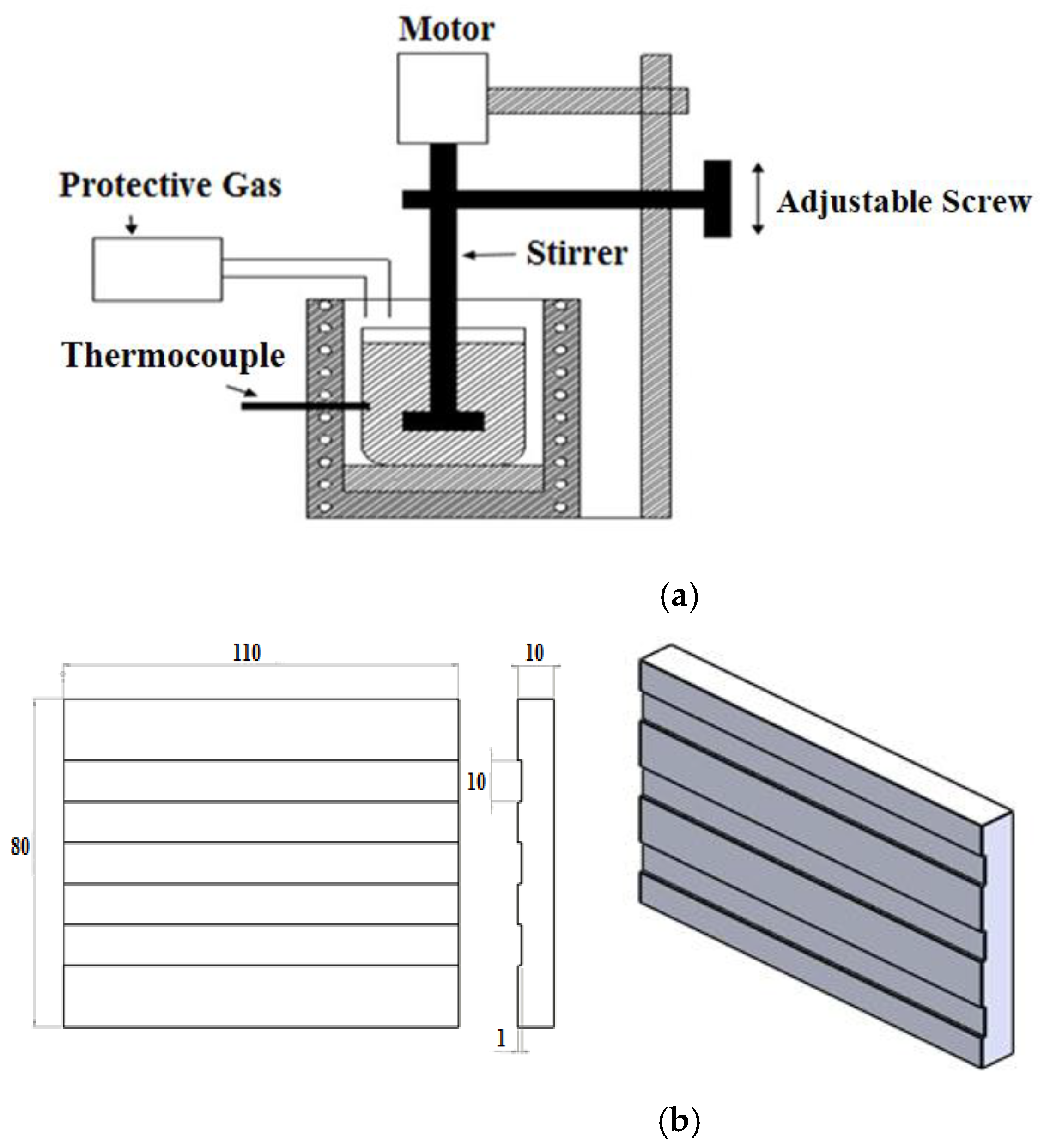
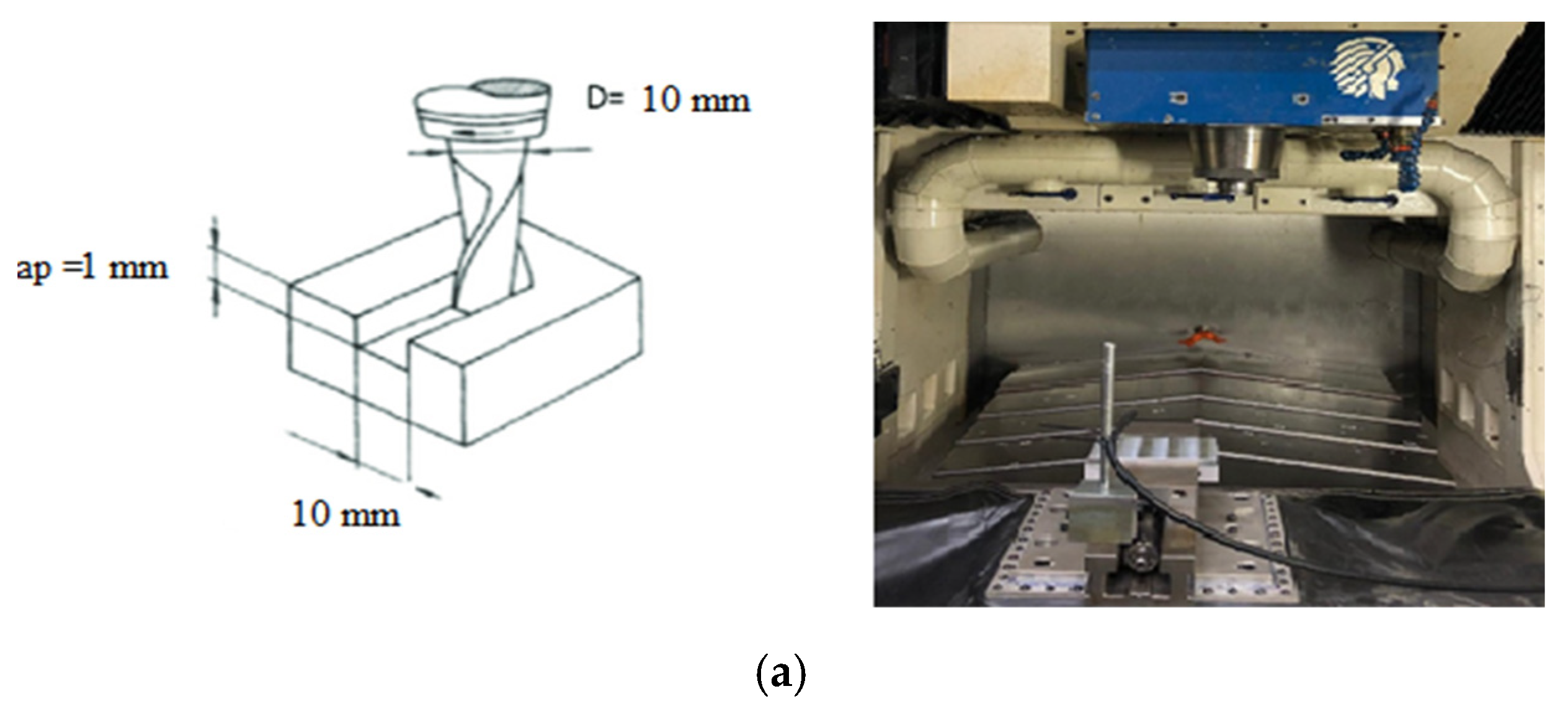

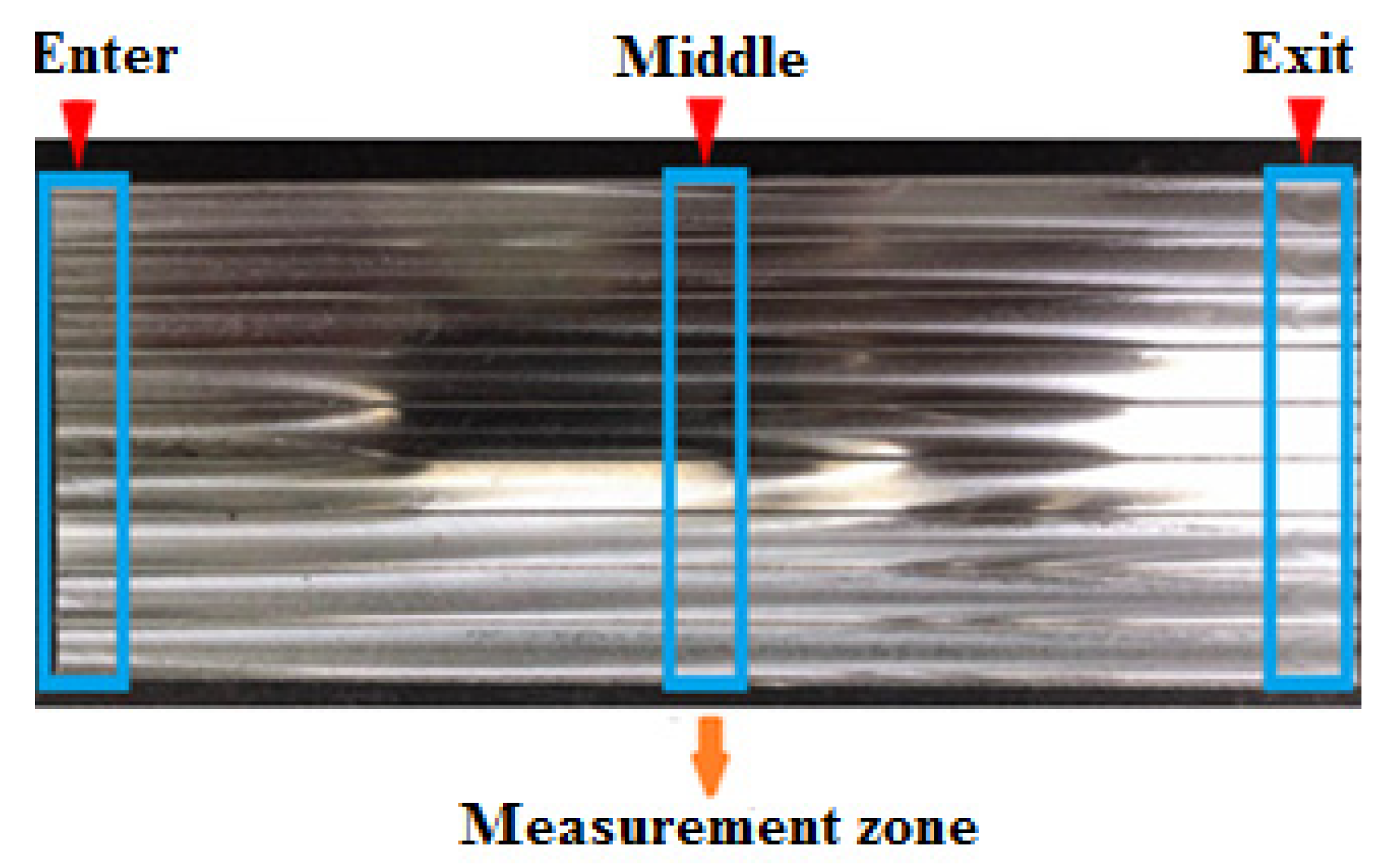

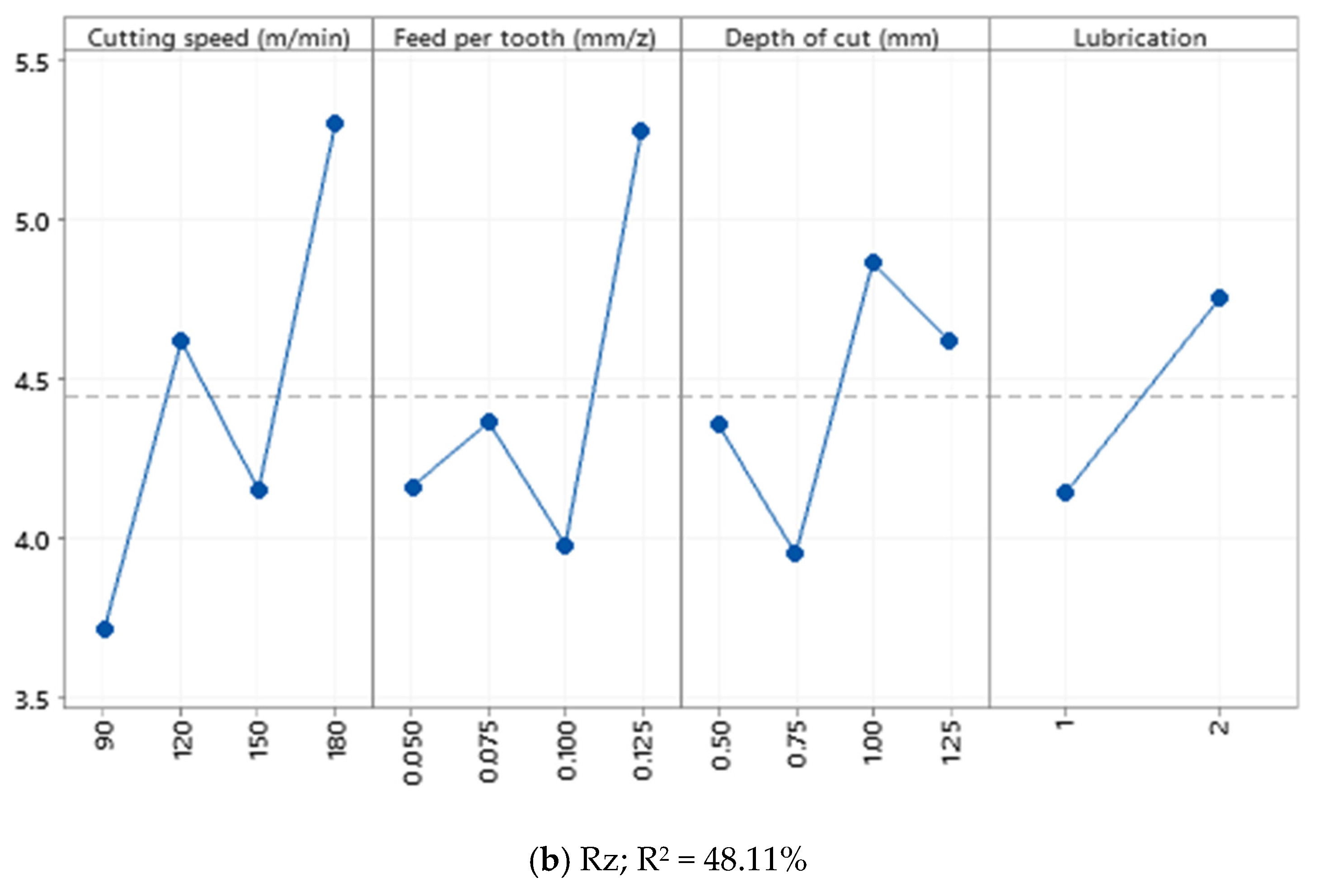
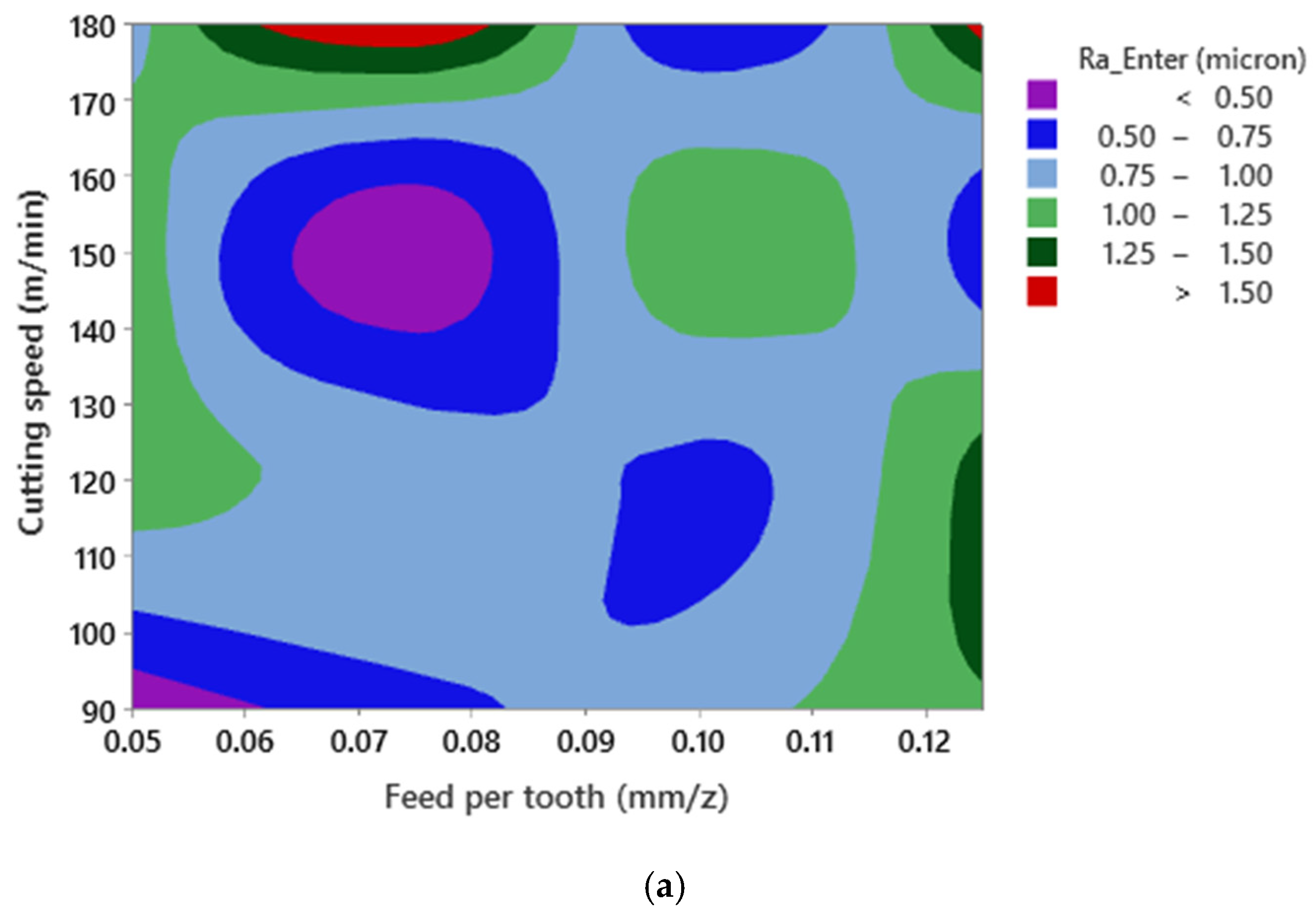


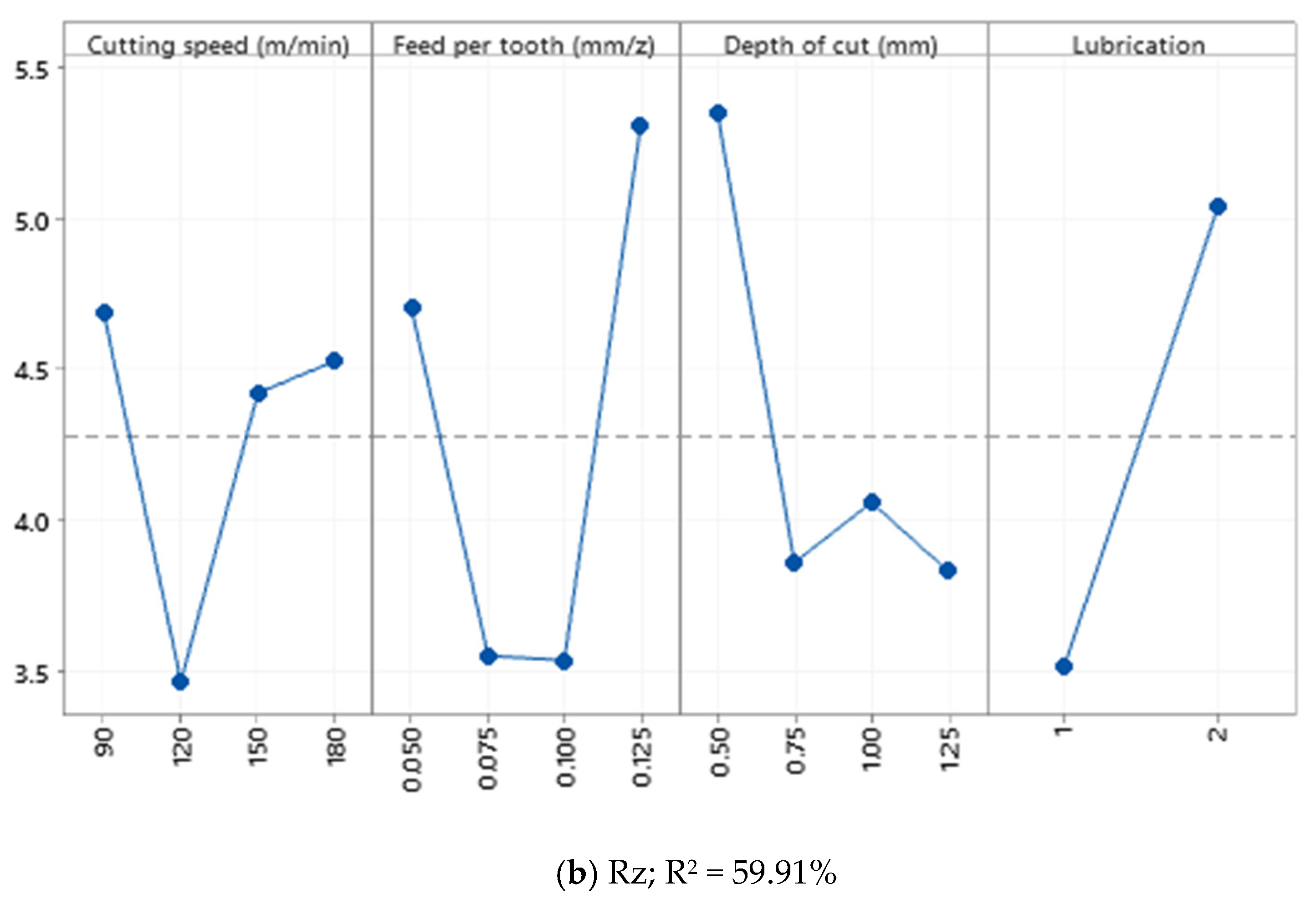


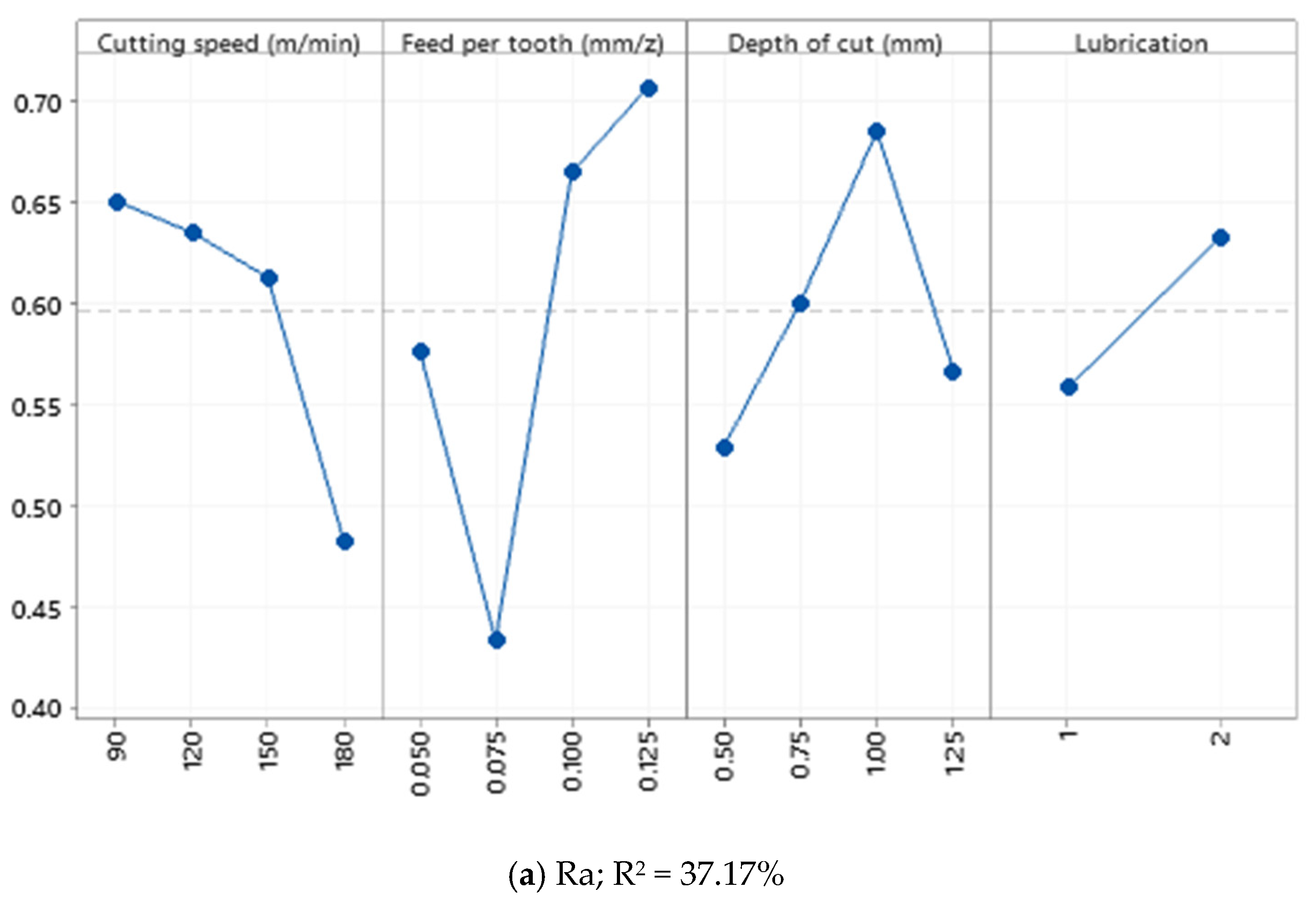
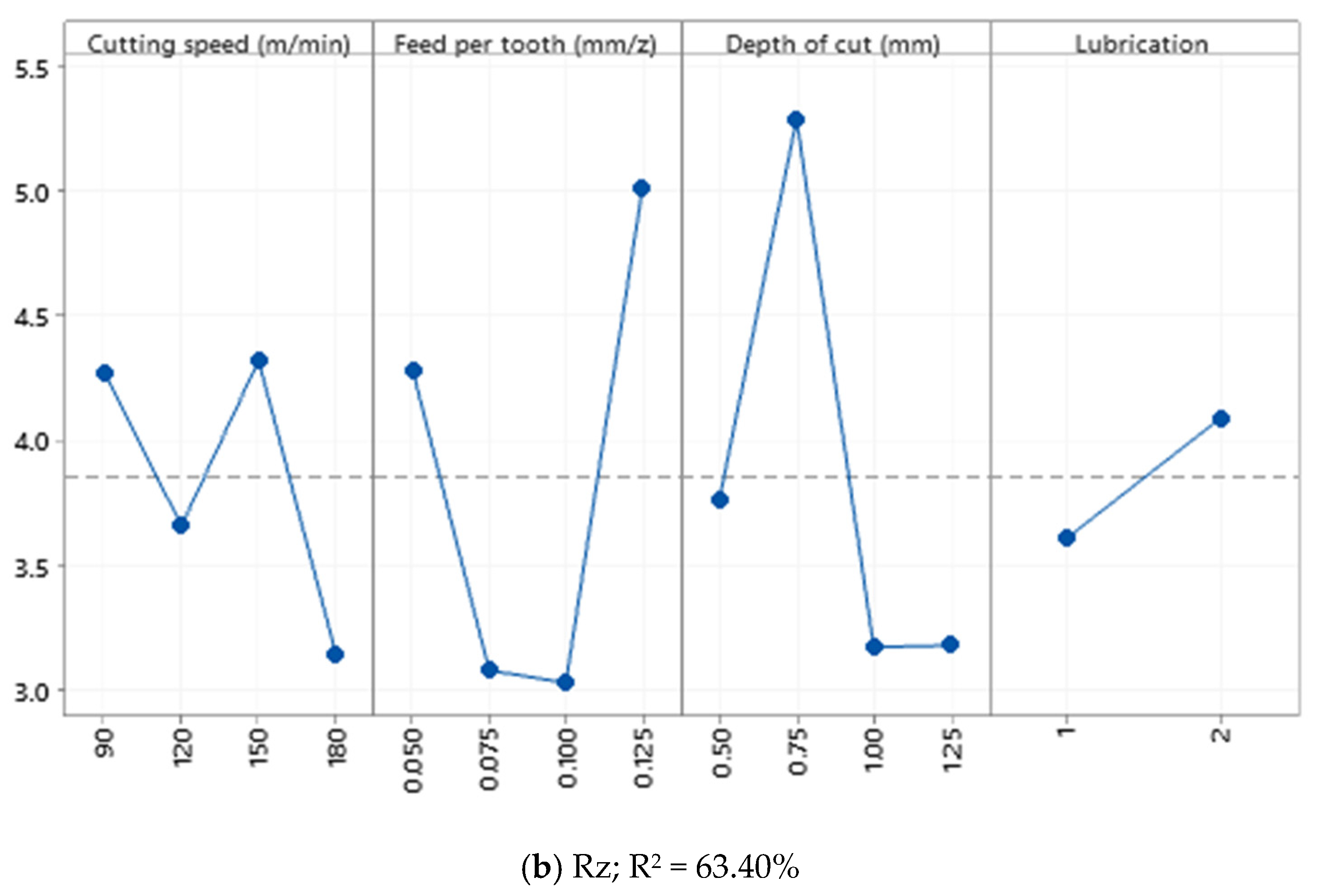

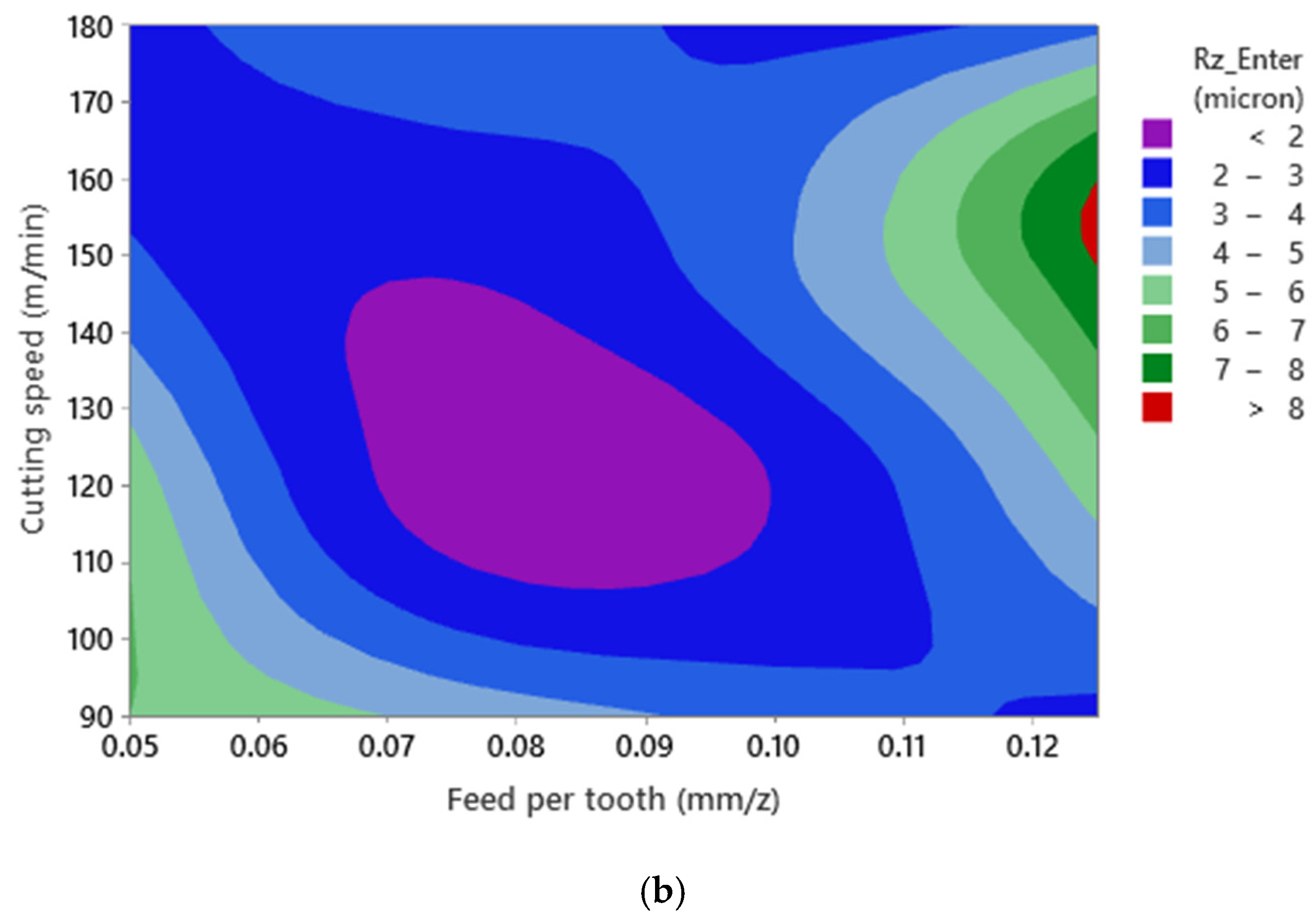
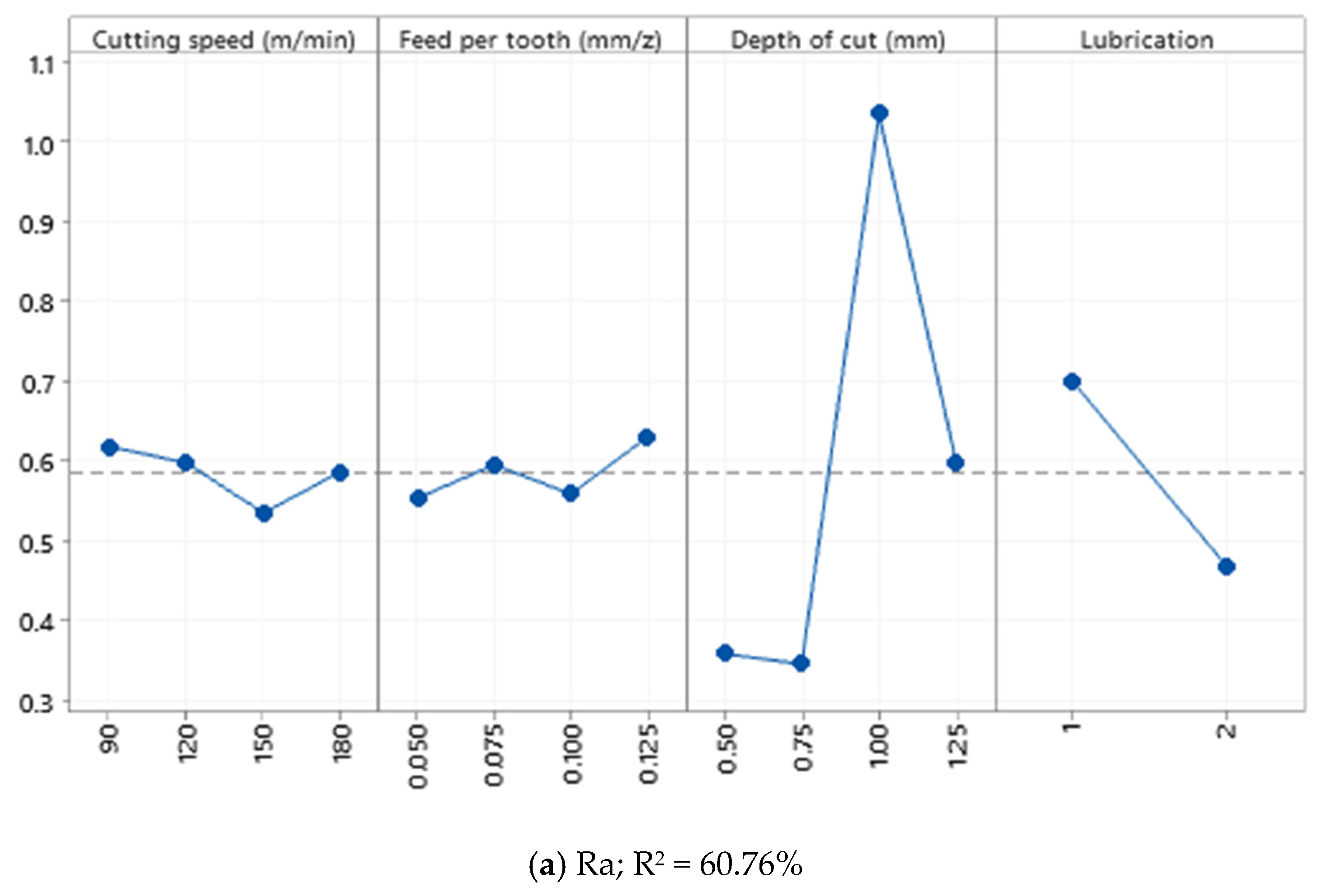


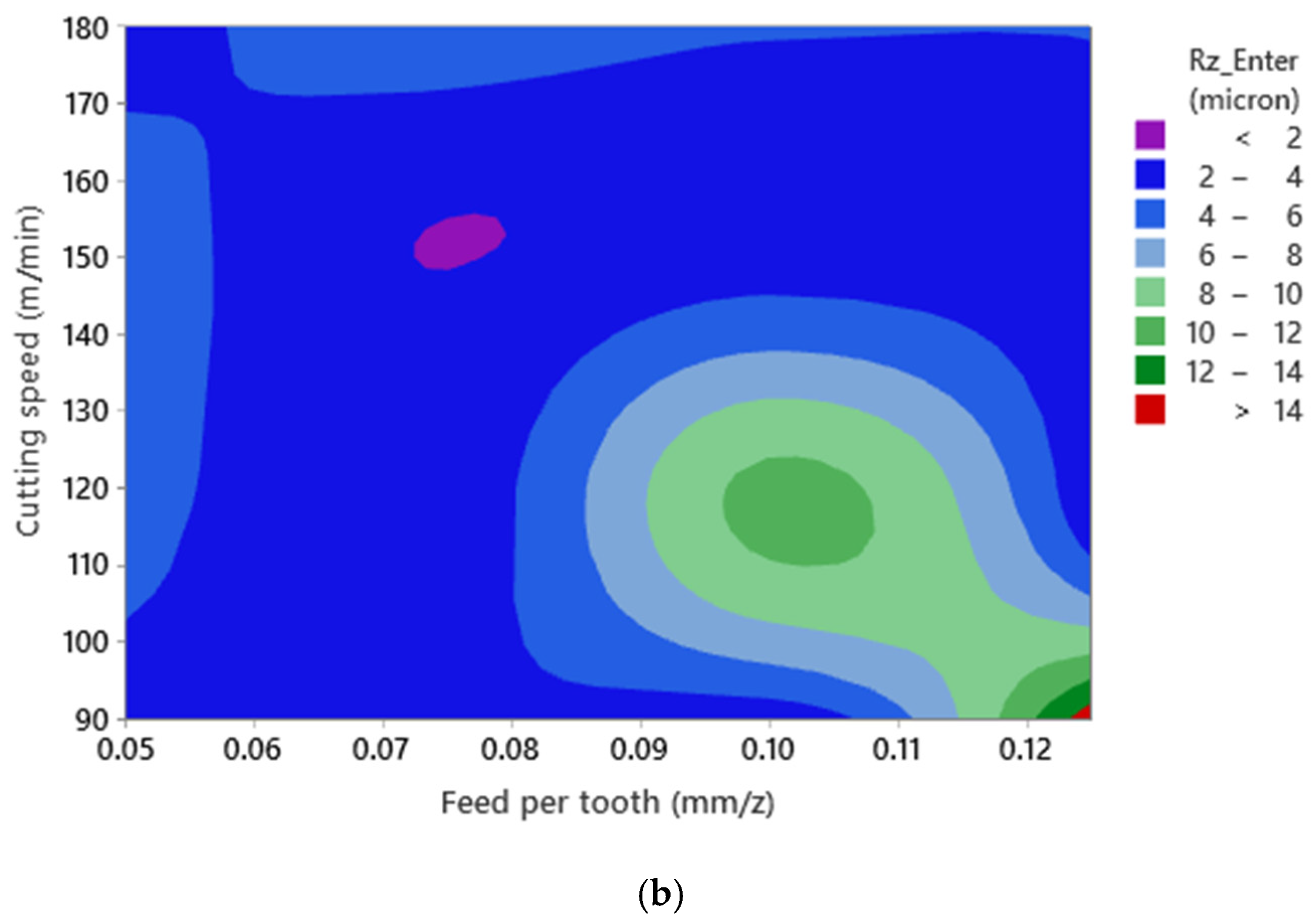
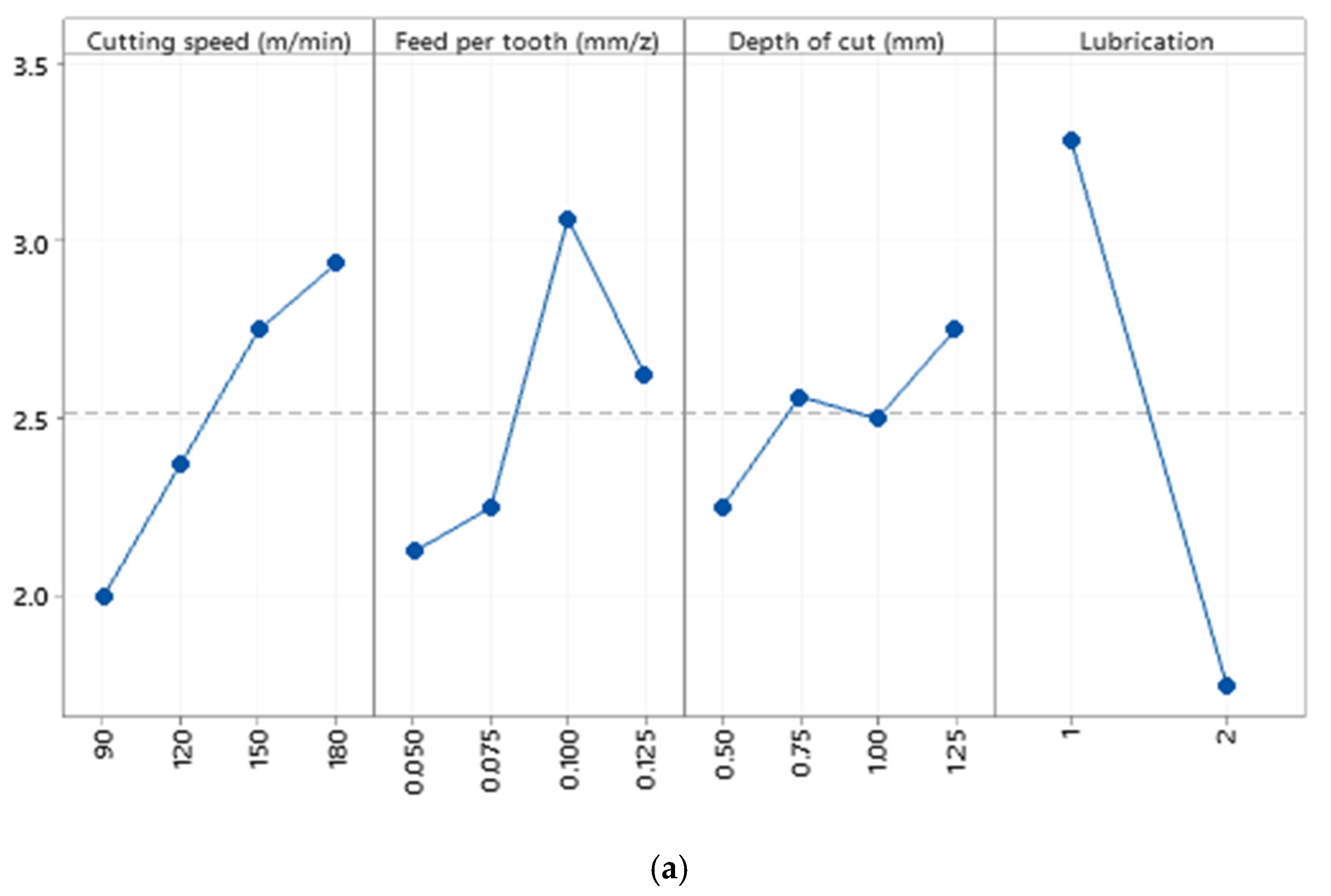


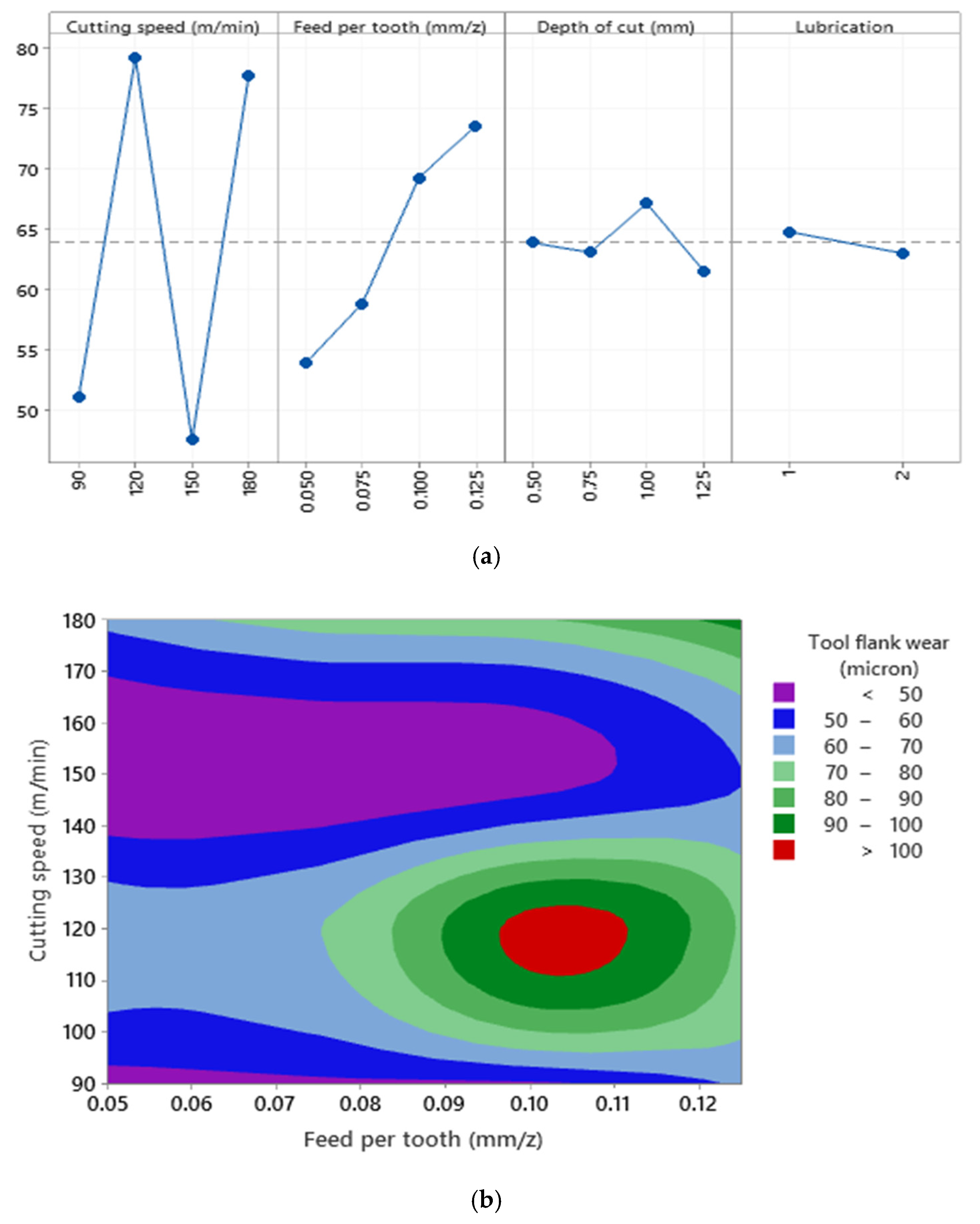
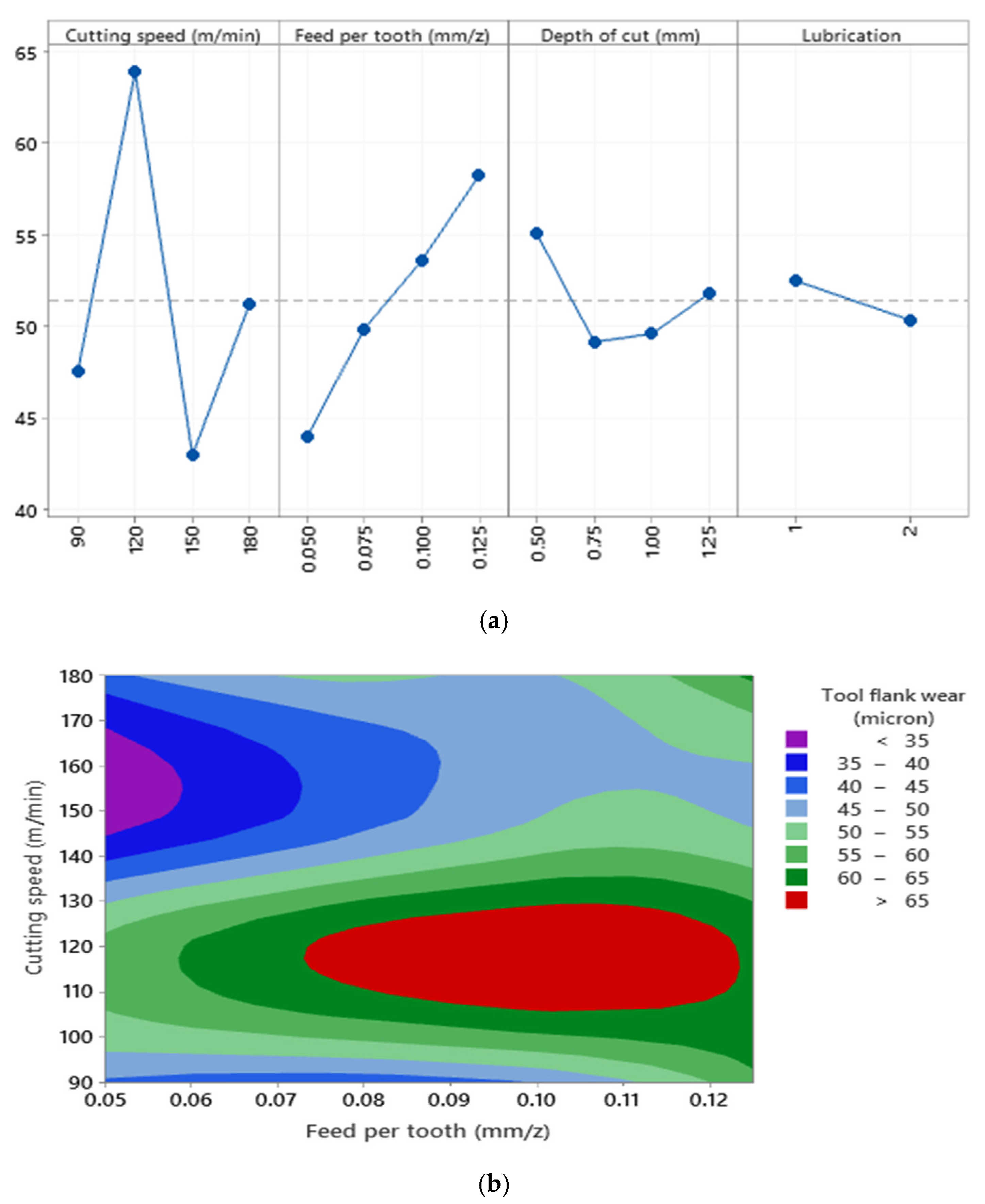
| Composite Materials | Base Material | Reinforcement Particles |
|---|---|---|
| 1 | Al520 | --- |
| 2 | Al520 | 10% SiC |
| 3 | Al520 | 10% SiC + 1% Bi |
| 4 | Al520 | 10% SiC + 1% Sn |
| Materials | Al | Si | Fe | Cu | Mn | Mg | Zn | Cr | Ti |
|---|---|---|---|---|---|---|---|---|---|
| Al520 | 89.32 | 0.083 | 0.0527 | 0.0225 | 0.0218 | 10.4 | 0.0025 | 0.0024 | 0.0025 |
| Al520 + 10%SiC | 84.11 | 4.44 | 0.133 | 0.0063 | 0.0239 | 9.7 | 0.0042 | 0.0115 | 0.0044 |
| Al520 + 10%SiC + 1%Bi | 89.06 | 0.21 | 0.238 | 0.005 | 0.0362 | 10.4 | 0.0194 | 0.0252 | 0.001 |
| Al520 + 10%SiC + 1%Ni | 88.47 | 2.36 | 0.0999 | 0.0675 | 0.0228 | 8.72 | 0.0052 | 0.0053 | 0.0042 |
| Cutting Parameters | Levels | |||
|---|---|---|---|---|
| Cutting speed (m/min) | 90 | 120 | 150 | 180 |
| Feed per tooth (mm/z) | 0.05 | 0.075 | 0.1 | 0.125 |
| Depth of cut (mm) | 0.5 | 0.75 | 1 | 1.25 |
| Cooling conditions | Dry | Wet | - | - |
| Test No. | Cutting Parameters | |||
|---|---|---|---|---|
| Lubrication Mode | Cutting Speed (m/min) | Feed Rate (mm/z) | Depth of Cut (mm) | |
| 1 | Dry | 90 | 0.05 | 0.5 |
| 2 | Wet | 90 | 0.075 | 0.75 |
| 3 | Wet | 90 | 0.1 | 1 |
| 4 | Dry | 90 | 0.125 | 1.25 |
| 5 | Dry | 120 | 0.05 | 0.75 |
| 6 | Wet | 120 | 0.075 | 0.5 |
| 7 | Wet | 120 | 0.125 | 1.25 |
| 8 | Dry | 120 | 0.1 | 1 |
| 9 | Wet | 150 | 0.05 | 1 |
| 10 | Dry | 150 | 0.75 | 1.25 |
| 11 | Dry | 150 | 0.1 | 0.5 |
| 12 | Wet | 150 | 0.125 | 0.75 |
| 13 | Wet | 180 | 0.05 | 1.25 |
| 14 | Dry | 180 | 0.75 | 1 |
| 15 | Dry | 180 | 0.1 | 0.75 |
| 16 | Wet | 180 | 0.125 | 0.5 |
| Grade | ap (mm) | Rɛ (mm) | W (mm) | F (mm) | S (mm) |  |
|---|---|---|---|---|---|---|
| HP E90AN-D.50-2-C.50-7C CUTTER | 7.7 | 0.4 | 4.5 | 1.2 | 2.6 | PVD TiAlN coated carbide with W and Co as core and binder |
| Materials | Measurement Sections | |||||
|---|---|---|---|---|---|---|
| Enter | Middle | Exit | ||||
| Ra | Rz | Ra | Rz | Ra | Rz | |
| Al520 | 54.9 | 48.11 | 72.71 | 46.88 | 69.26 | 61.42 |
| Al520 + 10% SiC | 60.76 | 59.91 | 61.58 | 59.99 | 33.67 | 64.10 |
| Al520 + 10%SiC + 1%Bi | 37.17 | 63.40 | 63.25 | 68.67 | 52.89 | 87.72 |
| Al520 + 10%SiC + 1%Sn | 60.76 | 56.64 | 75.36 | 68.75 | 86.41 | 67.69 |
| Materials | Cutting Speed | Feed Rate | Depth of Cut | Lubrication Mode | R2 |
|---|---|---|---|---|---|
| Al520 | 2 | 3 | 4 | 1 | 98.52% |
| Al520 + 10% SiC | 1 | 2 | 4 | 3 | 94.77% |
| Al520 + 10% SiC + 1% Bi | 1 | 2 | 4 | 3 | 91.04% |
| Al520 + 10% SiC + 1%Sn | 1 | 2 | 4 | 3 | 96.04% |
Publisher’s Note: MDPI stays neutral with regard to jurisdictional claims in published maps and institutional affiliations. |
© 2022 by the authors. Licensee MDPI, Basel, Switzerland. This article is an open access article distributed under the terms and conditions of the Creative Commons Attribution (CC BY) license (https://creativecommons.org/licenses/by/4.0/).
Share and Cite
Alipour Sougavabar, M.; Niknam, S.A.; Davoodi, B.; Songmene, V. Milling Al520-MMC Reinforced with SiC Particles and Additive Elements Bi and Sn. Materials 2022, 15, 1533. https://doi.org/10.3390/ma15041533
Alipour Sougavabar M, Niknam SA, Davoodi B, Songmene V. Milling Al520-MMC Reinforced with SiC Particles and Additive Elements Bi and Sn. Materials. 2022; 15(4):1533. https://doi.org/10.3390/ma15041533
Chicago/Turabian StyleAlipour Sougavabar, Mahmoud, Seyed Ali Niknam, Behnam Davoodi, and Victor Songmene. 2022. "Milling Al520-MMC Reinforced with SiC Particles and Additive Elements Bi and Sn" Materials 15, no. 4: 1533. https://doi.org/10.3390/ma15041533







